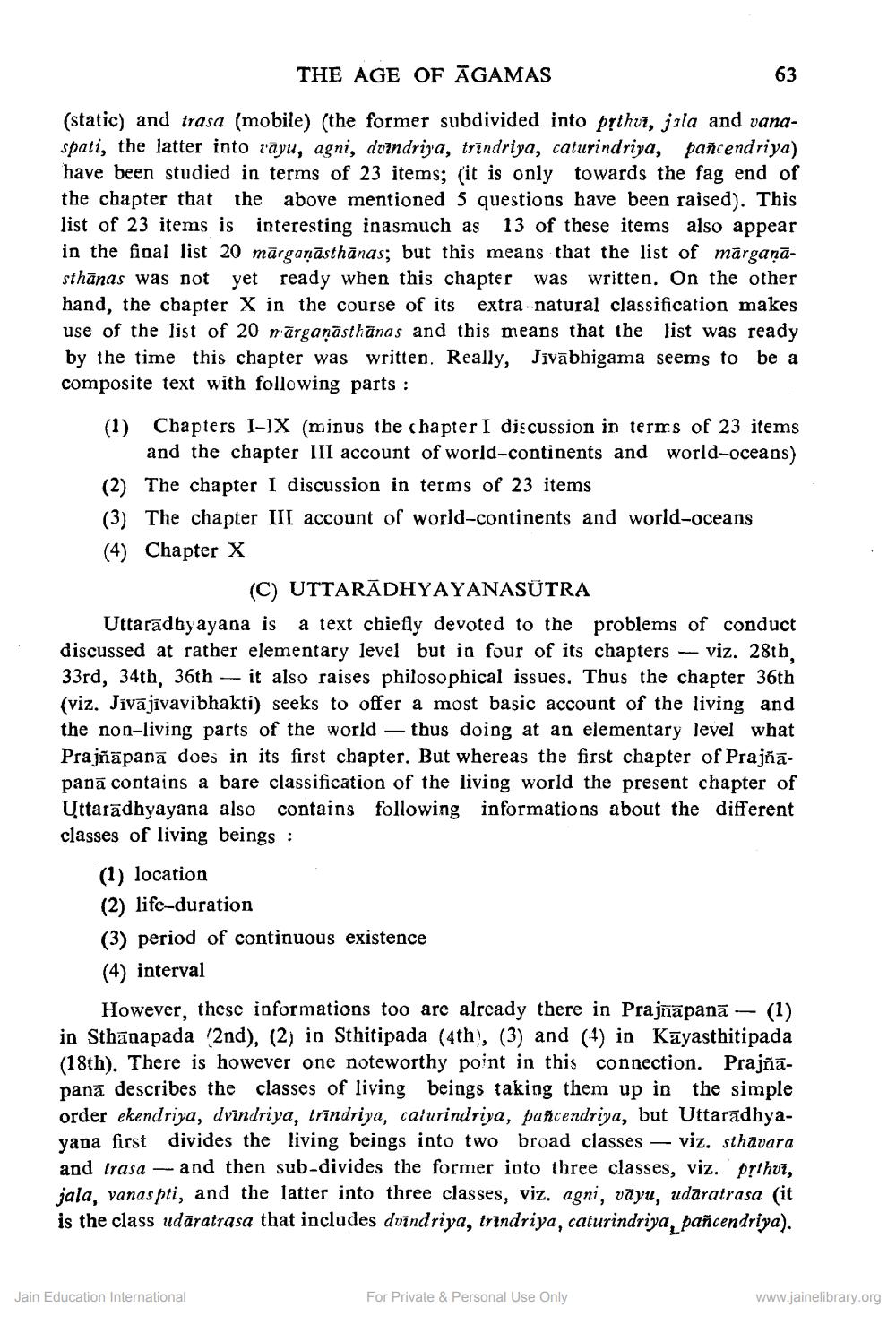________________
THE AGE OF ĀGAMAS
63
(static) and trasa (mobile) (the former subdivided into prthui, jala and vanaspati, the latter into rāyu, agni, dužndriya, trindriya, caturindriya, pañcendriya) have been studied in terms of 23 items; (it is only towards the fag end of the chapter that the above mentioned 5 questions have been raised). This list of 23 items is interesting inasmuch as 13 of these items also appear in the final list 20 mārganāsthānas; but this means that the list of märganāsthānas was not yet ready when this chapter was written. On the other hand, the chapter X in the course of its extra-natural classification makes use of the list of 20 mārgaņāsthānas and this means that the list was ready by the time this chapter was written. Really, Jivabhigama seems to be a composite text with following parts:
(1) Chapters 1-1X (minus the chapter I discussion in terms of 23 items
and the chapter III account of world-continents and world-oceans) (2) The chapter I discussion in terms of 23 items (3) The chapter III account of world-continents and world-oceans (4) Chapter X
(C) UTTARĀDHYAYANASÜTRA Uttaradhyayana is a text chiefly devoted to the problems of conduct discussed at rather elementary level but in four of its chapters -- viz. 28th 33rd, 34th, 36th -- it also raises philosophical issues. Thus the chapter 36th (viz. Jivājīvavibhakti) seeks to offer a most basic account of the living and the non-living parts of the world - thus doing at an elementary level what Prajñāpanā does in its first chapter. But whereas the first chapter of Prajñā. panā contains a bare classification of the living world the present chapter of Uttaradhyayana also contains following informations about the different classes of living beings :
(1) location (2) life-duration (3) period of continuous existence (4) interval
However, these informations too are already there in Prajnapanā -- (1) in Sthānapada (2nd), (2) in Sthitipada (4th), (3) and (4) in Kāyasthitipada (18th). There is however one noteworthy point in this connection. Prajñāpanā describes the classes of living beings taking them up in the simple order ekendriya, dvīndriya, trīndriya, calurindriya, pañcendriya, but Uttarādhyayana first divides the living beings into two broad classes – viz. sthāvara and trasa --- and then sub-divides the former into three classes, viz. ' orthui, jala, vanas pti, and the latter into three classes, viz. agni, vāyu, udaratrasa (it is the class udaratrasa that includes dvindriya, trindriya, caturindriya, pañcendriya).
Jain Education International
For Private & Personal Use Only
www.jainelibrary.org




